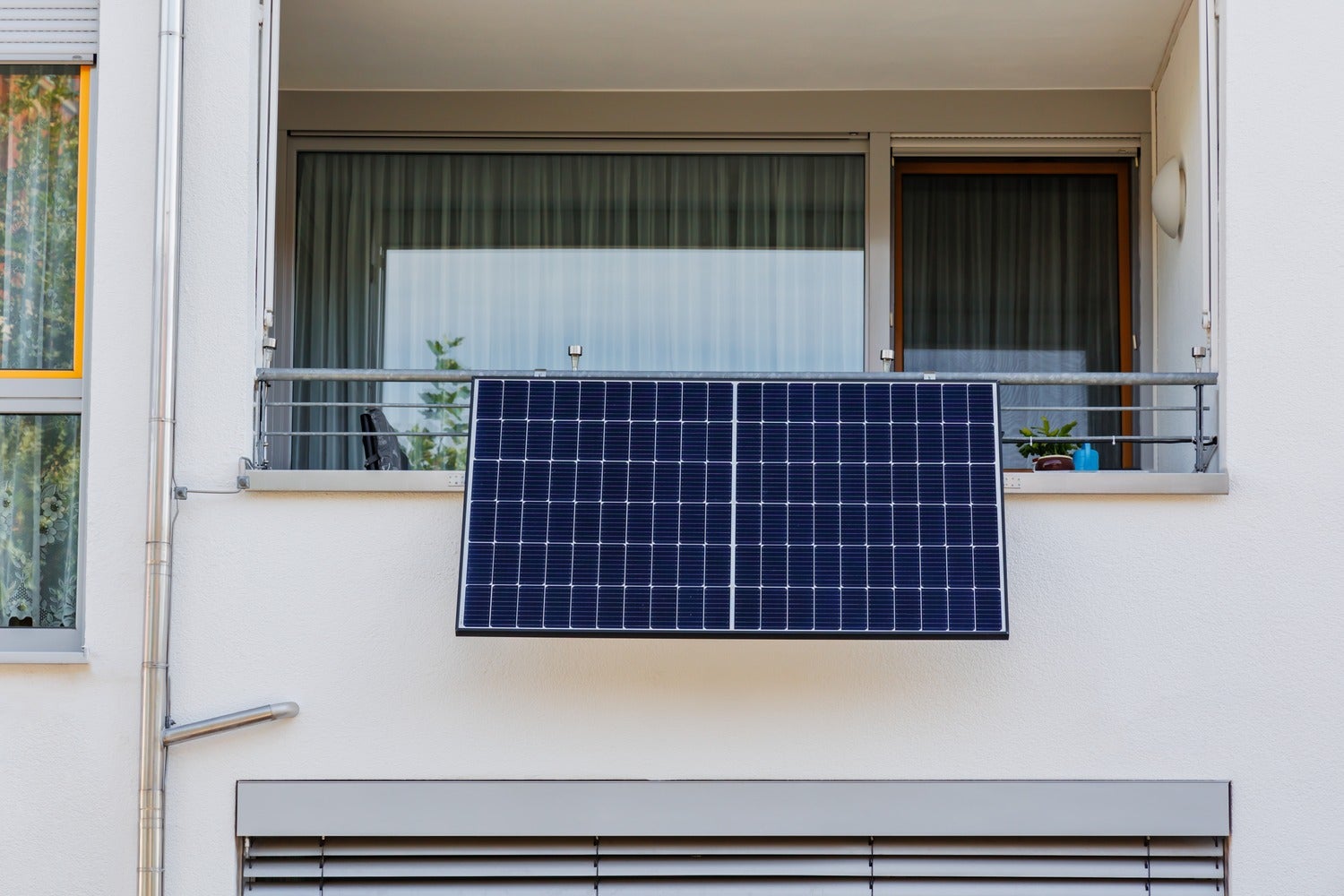If homeowners want in on the benefits of solar energy—namely untethering themselves from a predominantly fossil-fueled grid—their best option is often to install solar panels on their roofs. But renters and apartment dwellers don’t necessarily have the same option. One solution? Plug-and-play solar panels.
Internationally, countries like Germany are increasingly adopting what’s become known as balcony solar or plug-and-play solar. But in the U.S., building codes and local permitting schemes make it much more difficult, if not impossible, to harvest the sun’s energy this way. Could that ever change?
What is balcony solar?
Balcony solar works a lot like its rooftop cousin. The systems capture sunlight, which an inverter swaps into the alternating current electricity that powers a home. Unlike rooftop solar, they don’t require any professional setup, and they plug into normal outlets; they also cost as little as $450 each. Most terraces can accommodate one or two panels, and folks can also add a battery to save that energy for nights and cloudy days.
Solar balconies don’t make sense for everyone. Whether a home can reap their benefits depends, for instance, on how much of that outdoor area is shaded, and which cardinal direction it faces: South is ideal, east and west can work, but north’s a no-go.
Balcony solar also can’t cover a household’s entire energy draw—one module can generate about 800 kilowatt-hours of electricity per year and the average American one-to-two-bedroom apartment uses about 900 kWh per month—but it does enable more people to engage in cleaning up the energy mix. Each system saves about 559 kilograms of CO2 emissions per year, which is the equivalent to 12% of what comes out of a car’s tailpipe annually. Scale that up, as Germany has across 500,000-plus homes, and you’ve got 279,500 metric tons of CO2 saved, or 17,500 cars off the road.
Could the balcony solar boom reach the states?
Germany is leading the world in adoption of this tech, and many European countries, including France and Austria, are following in its footsteps. Others, like Belgium and Hungary, don’t allow it yet, in part due to fears that unregistered systems will disrupt the electricity grid.
In the U.S., plug-and-play is a no-go. Local and state permitting requirements and building codes typically tamp down balcony panels through restrictive requirements around grid connections, electrical panels, and fire safety. Although you can see some solar balconies in the country, they’re likely to be standard rooftop solar panels, not store-bought plug-and-plays.
Can that change? Maybe. The Department of Energy has voiced support for plug-and-play projects in the past, and earlier this year, industry publisher North American Clean Energy rekindled that call by establishing a working group to squash barriers to plug-and-play solar in the U.S.
Until the U.S. regulatory landscape changes, however, renters and apartment dwellers can still participate in solar projects—just perhaps not on their own balconies. They can, for instance, check out community solar projects, in which participants get a chunk off their utility bill for subscribing to or purchasing a share of a local solar farm. Or, in a handful of states, residents can consider switching to a utility provider with a great focus on renewables.

